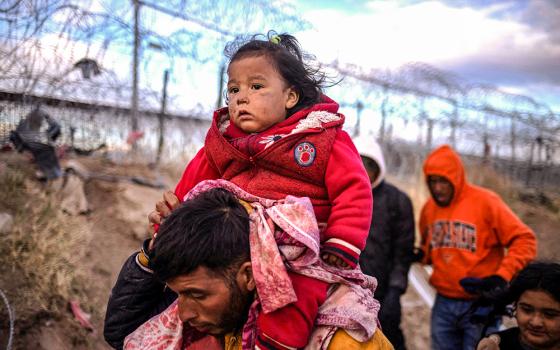The procedure for choosing and appointing new bishops is largely secret, done with scant consultation of the community onto which a new leader is imposed and with little regard for the history or character of the community.
In recent years, we have seen, in one instance, a new bishop go into a diocese and condemn the writings of his predecessor and in another, a new bishop who, during the first year of his tenure, destroyed most of the programs that had been developed over 40 years and fired most of the competence in the chancery office.
Dioceses -- and Catholics who live and minister and worship in them -- are always at the mercy of the next bishop and that bishop’s particular whims.
So it is with interest that we learned that Archbishop Raymond Burke, who left St. Louis with a less-than-pastoral record of upset and excommunications, was recently named to the powerful Congregation for Bishops.
That’s the part of the Vatican bureaucracy that, aside from the pope himself, has the most to do with the appointment of bishops.
It is with interest, too, that we note the two most recent appointments -- Bishop Jerome E. Listecki, from La Crosse, Wis. (where he succeeded the aforementioned Burke in 2004), to Milwaukee, and Bishop Kevin C. Rhoades of Harrisburg, Pa., to Fort Wayne-South Bend, Ind., the home of the University of Notre Dame.
Earlier in the year they were among a small minority of U.S. bishops who publicly objected to Notre Dame’s invitation of President Barack Obama as commencement speaker. Rhoades was at the forefront of that criticism.
Perhaps it’s all coincidence that the two new appointments came from that minority -- especially since all the indications from Rome were that the Vatican had no problem with the invitation -- but we’ll never know for certain. The Vatican never promised -- nor has felt the least bit obligated -- to offer explanations as to why they make the appointments they do.
If transparency is lacking, there are certain clear indicators as to which faction of U.S. church prelates holds the upper hand in Rome.
Burke, as noted above, is one of the more divisive figures in recent U.S. church history. Another member of the Congregation for Bishops is Cardinal Bernard Law, the unrepentant symbol of the most debilitating scandal to hit the church in the modern era. He is the only prelate yet forced from office for his role in covering up the sex abuse scandal, and he was forced out only because of enormous public pressure, including from many of his priests. But he keeps his place at the table of those who determine the church’s future leadership.
He is joined by Cardinal Justin Rigali of Philadelphia, who worked a series of positions in the Vatican bureaucracy almost immediately after ordination and continuing through most of his career, including a long stint at the Congregation for Bishops, until his appointment as archbishop of St. Louis in 1994. There is one line in his online biography that suggests he might have some pastoral experience: “During the same time, he was also engaged in pastoral services to a number of parishes and seminaries in Rome.” Word is -- again, no one in authority ever actually says this sort of thing -- that he has been behind some of the most divisive recent appointees, including Bishop Joseph F. Martino of Scranton, Pa., a highly controversial figure who recently resigned under pressure.
Cardinal James F. Stafford, formerly head of the Apostolic Penitentiary, rounds out the four U.S. prelates overseeing U.S. episcopal appointments. Stafford was way ahead of his contemporaries during his tenure as archbishop of Denver in condemning an array of Catholic thinkers and activists while refusing to allow them to speak in his diocese.
While transparency is out, what is clear is that those U.S. prelates who exercise the greatest influence in the bishop selection process come out of the ultraconservative wing of the U.S. episcopacy. Not exactly representative, even among the bishops themselves.



